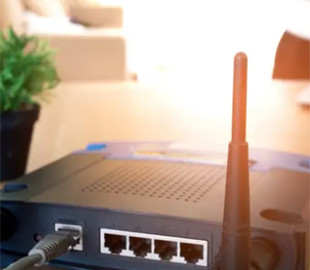
If you want to get the most out of your home Wi-Fi network, simply placing your router near your devices may not be enough. By changing a few key settings of the router, you can significantly increase the speed of the Internet and expand the coverage area, especially if there are several users on the network or programs with a large amount of data are running.
Here are some important tips from Techno 24 about basic Wi-Fi features to help you maximize the performance of your network.
Choose the right Wi-Fi band
Modern routers work in three Wi-Fi bands:
- 2.4 GHz,
- 5 GHz,
- 6 GHz.
Each range has unique characteristics that can affect speed and range. The 2.4GHz band offers the slowest speeds but has a long range, making it ideal for devices further away from the router.
The 5GHz band, on the other hand, offers faster speeds (more than double the 2.4 GHz), but has a shorter range, so it is best suited for gadgets located next to the router and that need fast Internet for streaming video in high quality (TV).
The newer 6GHz band is almost twice as fast as 5GHz and is good for even more demanding tasks, but requires a newer router model to support it.
Use QoS for priority access
QoS allows you to manage Internet traffic by giving priority to certain devices, which is especially useful in homes with multiple users. For example, if streaming video on a smart TV is frequently buffered, adjusting QoS settings on the router can help ensure that the TV receives more priority bandwidth.
200% Deposit Bonus up to €3,000 180% First Deposit Bonus up to $20,000This feature works similar to traffic management, allowing certain devices to “cut the line ” for smoother operation.
How to optimize Wi-Fi channels
Routers broadcast Wi-Fi signals on specific channels in each frequency range (similar to TV channels). In densely populated areas, such as apartment buildings, neighboring routers may share the same channel, resulting in congestion and reduced speeds.
You can identify and switch to less congested channels using a Wi-Fi analysis tool, for example, the WiFi Analyzer application.
- The 2.4 GHz band has 14 channels,
- the 5 GHz band – 34 channels,
- 6 GHz range – 59 channels.
Setting up a channel with fewer competing signals can improve your router's performance.
Update Firmware router
Updating your router's firmware is often overlooked, even though it's very important for security and performance. Firmware acts as the router's software foundation, allowing it to interact effectively with devices.
While some routers are updated automatically, many require a manual check. Regular firmware updates (approximately every six months) ensure that your router has the latest security fixes and performance improvements.
While optimizing these features may seem technically complex, each setting is quite simple and can provide tangible benefits. Placing your router in an optimal location is also an effective step to improve Wi-Fi quality.

